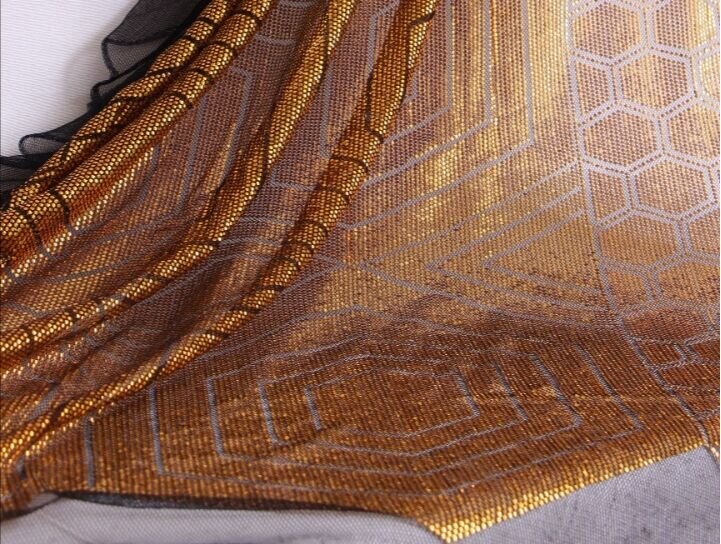Iranian crafter wins WCC Seal of Excellence

TEHRAN – Iranian crafter Manijeh Hosseini has won a Seal of Excellence from the World Crafts Council-Asia Pacific Region (WCC-APR).
Hosseini, who is a native of Bushehr province, gained the precious honor for her piece of Khos-Duzi, a traditional embroidery mainly practiced in southwest Iran, IRNA reported on Tuesday.
Iranian crafters from 12 provinces along with tens of international fellow craftspeople competed for the honor at the event, which was recently held in Uzbekistan, the report said.
Khos-Duzi consists of sewing thin strips of Khos or Naqdeh on fine and delicate lace fabrics. The strips are arranged to make geometric, cursive, arabesque, “Danehee” and “Kheshti Payeh Boland” motifs and patterns. In addition to lace fabrics, Khos Duzi is applied on velvet, too.
Khos-Duzi is mostly used to decorate lace drapes, lace scarves (Jalbil) and lace Chadors (usually in black), bridal gowns, scarves, covers of Holy Quran, trousers, beddings, covers for cushions, headwear, dresses, and many more.
According to the World Crafts Council, the Seal of Excellence recognizes handicrafts products that are culturally authentic and have been manufactured in a socially-responsible manner with respect for the environment.
“Each craft is reviewed according to excellence, authenticity, innovation, eco-friendliness, marketability, and social responsibility to ensure the highest level of craft excellence and distinguish a product as a benchmark for craft production.”
With 14 entries, Iran ranks first globally for the number of cities and villages registered by the World Crafts Council, as China with seven entries, Chile with four, and India with three ones come next. For instance, Shiraz is named a “world city of [diverse] handicrafts”, Malayer is a global hub for woodcarving and carved-wood furniture, while Zanjan has gained the title of a “world city of filigree”.
In addition, the ancient city of Shiraz has been chosen to host the 39th General Assembly of the World Crafts Council-Asia Pacific Region (WCC-APR) in May 2023. Shiraz has a remarkable amount of handicraft pioneers. With an average age of 70, some of these pioneers are still active at their workshops. The occupational records of about 100 pioneers are collected and are annually praised by the custodians of the WCC General Office.
Available data compiled by the Ministry of Cultural Heritage, Tourism, and Handicrafts suggests the value of Iran’s handicrafts exports stood at $120 million during the first eleven months of the past Iranian calendar year 1399 (March 20, 2020 – February 18, 2021), Mehr reported. The country’s handicrafts exports slumped during the mentioned months in comparison to the same period last a year earlier due to the damage the coronavirus pandemic has inflicted on global trade.
The Islamic Republic exported $427 million worth of handicrafts during the first eleven months of the calendar year 1398. Of the figure, some $190 million was earned via suitcase trade (allowed for customs-free and tax-free transfer) through 20 provinces, according to data compiled by the Ministry of Cultural Heritage, Tourism and Handicrafts. Ceramics, pottery vessels, handwoven cloths as well as personal ornamentations with precious and semi-precious gemstones are traditionally exported to Iraq, Afghanistan, Germany, the U.S., the UK, and other countries.
AFM
